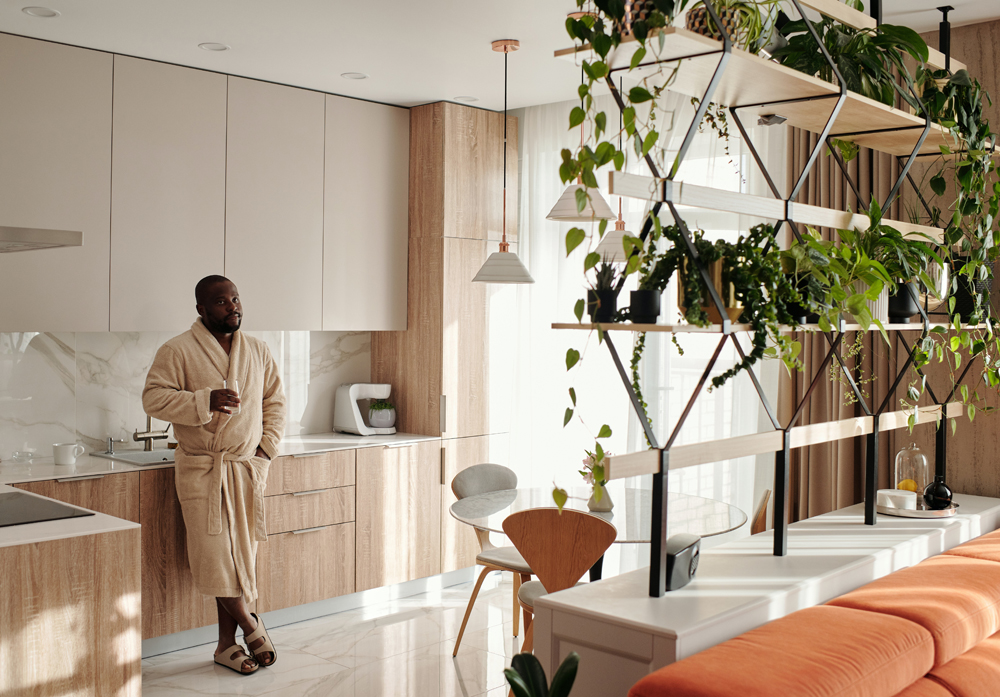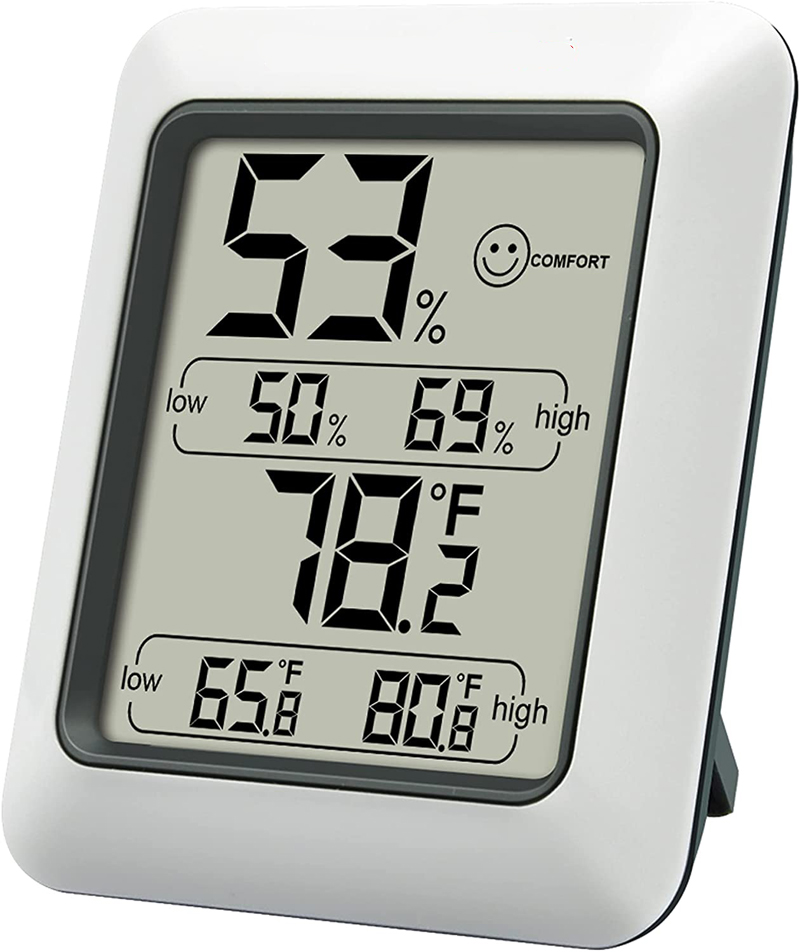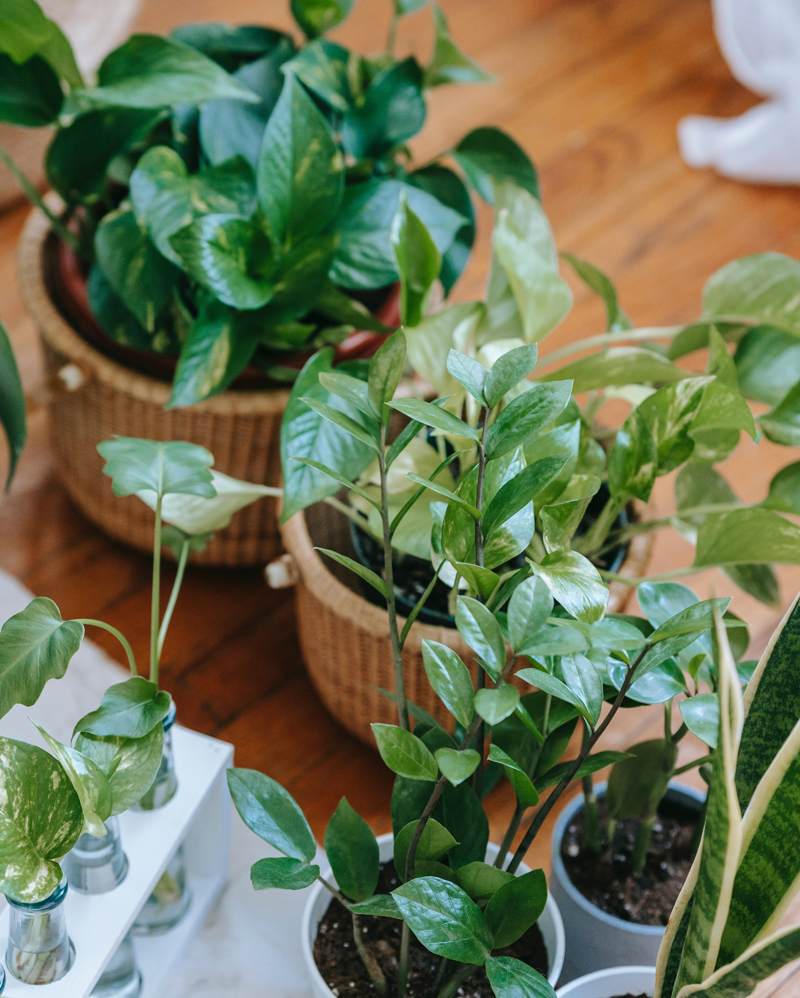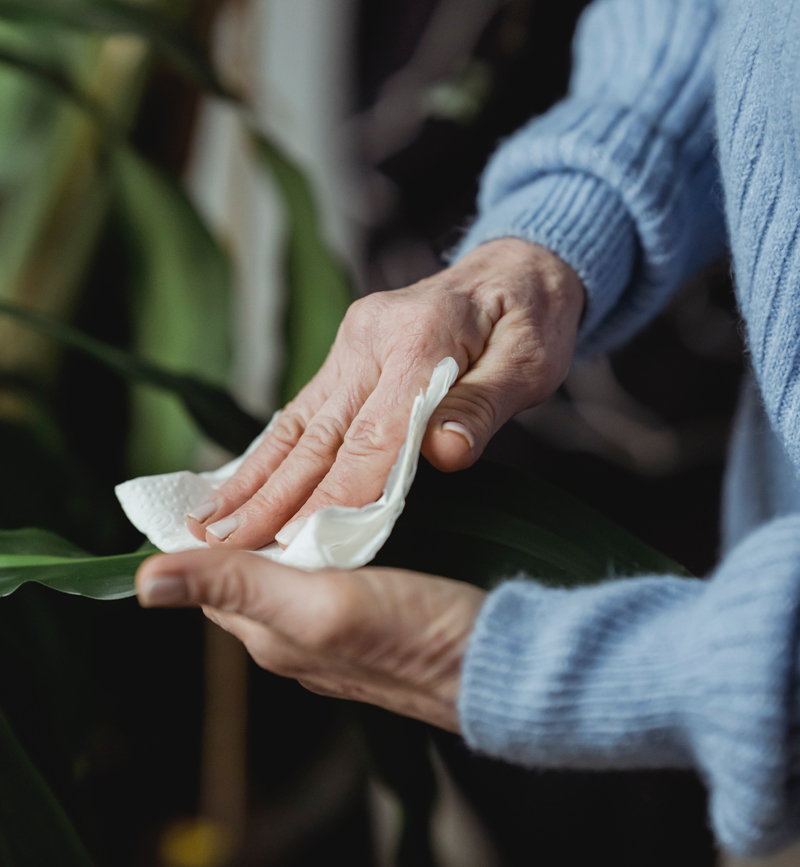
Do you need to mist your indoor plants to keep them healthy?
No, you don’t.
If I stopped there, this would be the shortest blog post in Good Earth Plant Company history!
But I wouldn’t do that to my loyal readers. Let’s discuss misting in a little more detail. We get asked about this frequently, especially during hot summer days.
Plants and people like the same indoor humidity

Your indoor plants are comfortable in the same humidity range you are – between 30 and 50 percent. Photo: Plava Laguna
Indoor plants prefer a humidity level between 40 and 60 percent. Most common types of indoor plants are native to parts of the world where there is a lot of rain and humidity. For example, Monsteras and philodendrons are both found from Mexico south to Panama.
The ideal indoor humidity for human health and comfort isn’t much different: between 30 and 50 percent according to the Mayo Clinic.

A hygrometer like this simple desktop tool can help monitor humidity levels inside.
San Diego County has a Mediterranean climate with mild winters and summers and less rainfall. Our natural outdoor humidity is between 20 and 30 percent. But if you live here, you know it varies wildly. If you take a walk on the beach in the morning, humidity can be 75 percent. On the same day you can go just 10 miles inland and be in bright sunshine.
But in general, indoor air is more humid than the air outside. Why? Because we use a lot of water in our daily lives, and a lot of it escapes into the air. When you run a sink faucet, washing machine, or dishwasher, and especially taking a shower you add water to the air. If you run air conditioning, cooler temperatures will prevent indoor humidity from evaporating. The opposite is true when you run your heater. It’s why air feels dry and people often use humidifiers indoors.
Reduced indoor humidity is also one reason why illnesses like colds and flu (and coronaviruses) spread more easily in colder months. Viruses survive in the air longer when it’s drier, and we have a greater chance of breathing them in.
So if the indoor air and temperature are generally comfortable for you, it’s also comfortable for your plants. If you want to be sure about it, you can use a hygrometer, which measures the percentage of moisture in the air. You can buy desktop portable digital temperature and humidity devices for under $20 on Amazon or nearly any office supply store. These will work just fine to test your indoor air. (Disclaimer: we aren’t endorsing any particular brand, the photo is for demonstration only).
If you measure the indoor humidity and it’s only 20 percent, what should you do to raise it for your indoor plants?
You’re far better off using a humidifier in the room than misting. They raise the humidity in the entire room and for a much longer period. Misting is limited and the water vapor will dissipate too quickly to do much good.
It also helps to group your plants together. Plants themselves release moisture in the air through their leaves. The process is called transpiration. Grouping plants together creates a small microclimate with more humidity will benefit all the plants. Grouping your plants also creates an attractive display in your home.

Grouping plants together creates a small microclimate with more humidity will benefit all the plants. Photo: Teona Swift
You may have read advice about putting your indoor plants on top of trays or saucers with pebble and filing the trays with water. Good Earth Plant Company horticultural technicians advise against this idea because several things can go wrong. First, if the soil at the bottom of your container absorbs any water through the drainage holes, it can cause root rot. If you don’t flush out the water regularly, it will become an ideal breeding ground for fungus gnats. There’s a reason our blog post on fungus gnats has been the single most popular blog post in the history of this website. We just say no to this method.
If you must mist, we won’t stop you. But any indoor plant with fuzzy or hairy leaves should NOT be misted. They don’t like it and you might cause disease. African violets are a good example of this.

If you must mist, use room temperature tap water. Avoid softened water – too much salt. Photo: Cottonbro, Pexels
It’s best to mist with room temperature water, not too hot or cold. If you wouldn’t take a shower in it, your plants won’t like it either.
Go ahead and use regular tap water for your plants. You don’t need to use distilled water. Believe it or not, tap water is HEALTHIER for your plants. It contains safe levels of healthy minerals. Dangerous chemicals and heavy metals are removed. Otherwise, it wouldn’t be safe for humans to drink. Distilled water has all minerals removed. It’s “dead” water without any beneficial minerals your plants use to grow. Save your money.
Use caution when collecting rainwater for your indoor plants (when we next get any). If it runs off your roof or another surface, it will collect pollutants along the way. Make sure you gather rainwater straight from the sky
WARNING: Never use softened water on your indoor plants. If you use a water softening system, it’s adding salt to the water. This will kill your plants, or at least hurt their growth.

To keep plant leaves free of dust, you can GENTLY wipe the leaves with a cloth to keep them clean. Photo: Teona Swift
Your plants won’t mind a little misting with these few precautions, so if it gives you a moment of zen in your day, go right ahead. You can also use the opportunity to GENTLY wipe the leaves with a cloth to keep them clean.
If you find our advice valuable, we’d love you to share it with your friends on social media. Or check out the rest of the advice for plant parents throughout our blog. You might enjoy this post on plants that love hot weather.
Need more help? Our plant stylists are just an email or call away at 858-576-9300 or info@goodearthplants.com


